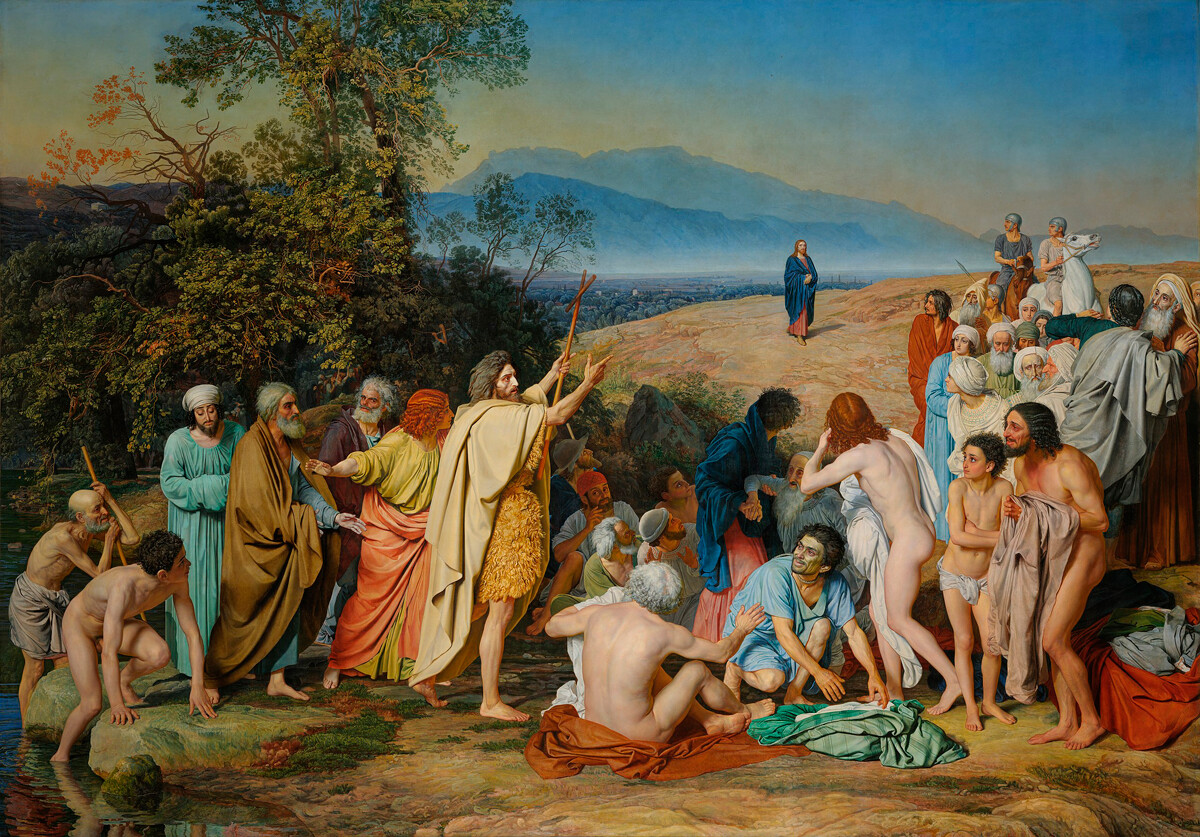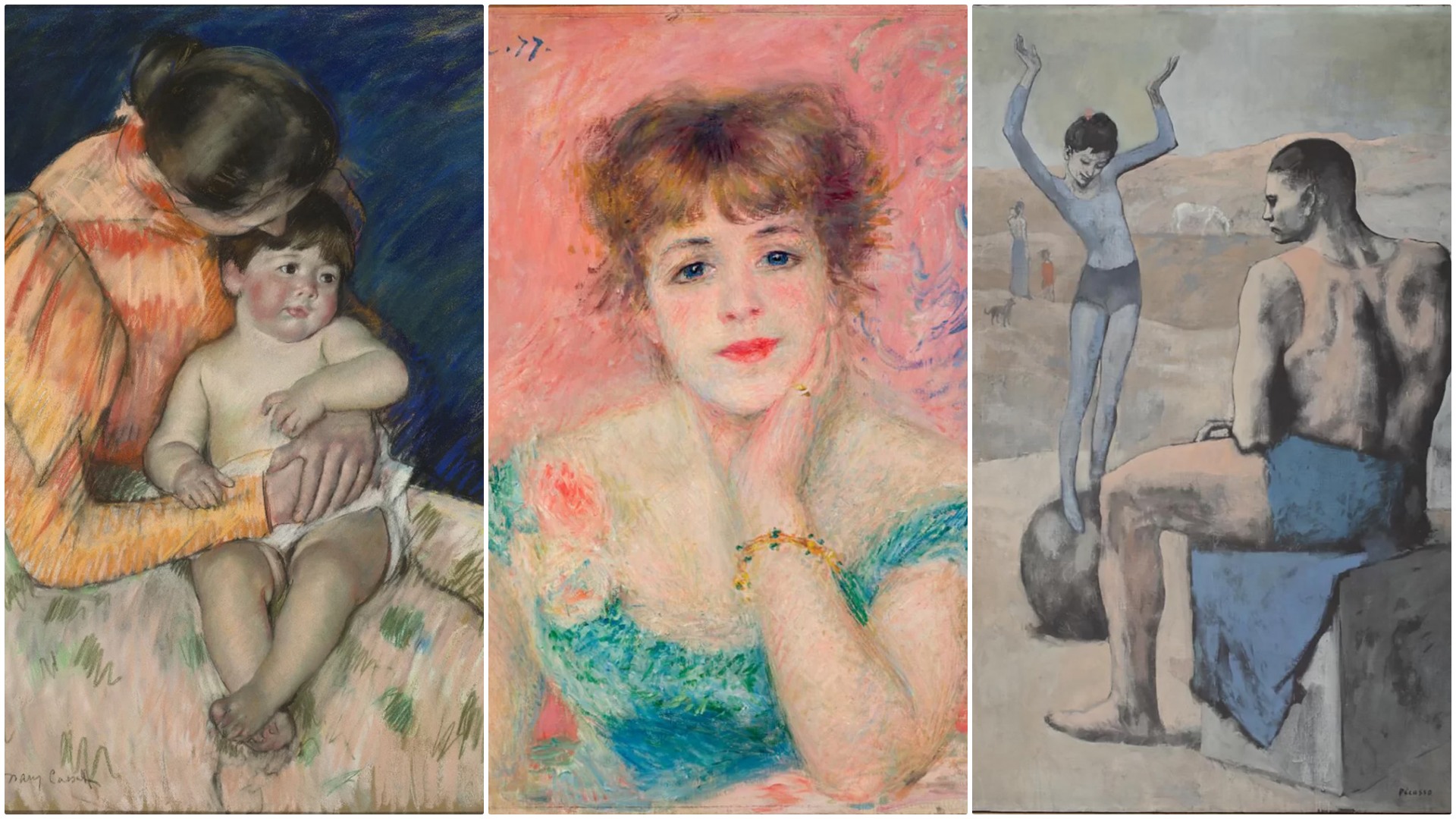
5 paintings by Alexander Ivanov you should know (PICS)

1. Priam Asking Achilles to Return Hector's Body, 1824

“I see a painter in him who promises a lot in the future,” said Academy of Arts professor Vasily Grigorovich about Alexander Ivanov when he saw his first original painting. There was no doubt that the son of painter Andrey Ivanov would follow in his father’s footsteps. Alexander discovered a love for painting early on – he studied painting at his father’s workshop, unlike the other students of the Academy of Arts, who lived at the educational institution. The successes of Ivanov Jr. were apparent: he didn’t just learn classical painting, he was able to create deeply dramatic artworks. For this particular work, the 18-year-old painter received a gold medal.
2. Appearance of Jesus Christ to Maria Magdalena (sketch), 1834

In fall 1830, Ivanov arrived in Rome for his internship. The painter had to copy “The Creation of Adam in the Sistine Chapel” and create studies on Biblical themes. But he was thinking more about creating a painting depicting the first appearance of the Savior to the people. As a warm-up, he decided to paint another narrative and picked the moment when Mary Magdalene saw the resurrected Jesus Christ. The first viewers were astonished: writer Alexey Timofeev didn’t hide his emotions, saying that Ivanov managed to express the majesty and gentleness of Jesus Christ. After the exhibition in Rome, the painting was sent to St. Petersburg, where it received an enthusiastic welcome. The Academy of Arts awarded Alexander Ivanov the title of an academic, and the painting was gifted to Nicholas I. The sketch for the painting was purchased in 1877 by Pavel Tretyakov.
3. Festival in Rome in October. Scene in the Loggia, 1842

Work on “The Appearance of Christ Before the People” occupied almost all of the painter’s time and energy. But he managed to create genre sketches: situations he encountered on Rome’s streets and squares. In the watercolor painting “Festival in Rome in October”, Ivanov depicted a folk dance where one girl asks the other about who stole her heart, and the rest of the people push the “culprit” to the center. Guests frequented the painter’s workshop; members of the imperial family were also among them. In 1838, Ivanov was visited by Tsesarevich Alexander Nikolayevich with his mentor Vasily Zhukovsky. The future Emperor Alexander II was left satisfied with the painting; he gave the painter a three-year allowance so he could finish the work.
4. Via Appia at Sunset, 1845

This tremendous painting sapped not just the painter’s strength but also his health. Due to eye disease he was forced to stop his work in the workshop for several years. In 1845, Ivanov, along with young mosaicist Egor Solntsev, embarked on a journey to the outskirts of Rome – “to look for beautiful places.” The landscape around Albano struck them so much that they set out to paint it immediately. Ivanov considered this painting unfinished, even though it showed ancient ruins and a view of Rome in the distance amid the rays of the setting sun.
5. The Appearance of Christ Before the People, 1837-1857

Ivanov toiled for 20 years on the most important painting of his life – about the appearance of Christ before the people when St John was baptizing people in the Jordan River. First, he created a small version of the painting, but then he decided that he wanted it on the scale of an epic historical canvas. Apart from the manifold sketches for the “Appearance”, Ivanov created about 200 studies on Biblical topics that were unrelated to the main painting.
In 1857, after the visit of Empress Alexandra Feodorovna and Grand Duchess Olga Nikolaevna to his workshop, Ivanov opened his doors to the general public for 10 days. There were so many people who wanted to see the painter’s magnum opus that he had to extend the public viewing. In May 1858 after 28 years away from his homeland, he arrived in St. Petersburg. With all the sketches and studies, “Appearance” was exhibited in the Academy of Arts; more than 300,000 visitors viewed it. Several weeks later, however, the painter died from cholera.
The painting was purchased by Alexander II for 15,000 rubles in silver. Soon after, it was sent to an exhibition in Moscow, and at this time, the emperor decided to donate the painting to the Rumyantsev Museum. In the 1920s, the “Appearance of Christ” was moved to the State Tretyakov Gallery, where a separate hall was built specifically for this colossal painting.
The exhibition “Alexander Ivanov – the Master of Watercolor. Genre Painting and Landscape” will take place in the State Tretyakov Gallery from May 20 to November 5, 2023.












